

In the third working session with the groups from the
Institut Bellvitge
, we divided each class group into three smaller working groups, each with a specific task: one group would be dedicated to tracing the route we would follow through the neighborhood during the next session; another group was dedicated to devising the communication strategy for the project (who the project was to be communicated to, in what way, and with what tools), and the third group was dedicated to finalizing the maps started in the previous session.
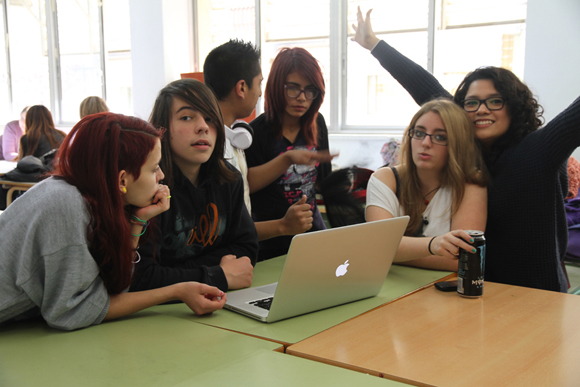
The communication group decided to open profiles on both Twitter and Tumblr (@cartografiesbell and http://cartografiesenmoviment.tumblr.com) through which they would narrate the development of the project, and began to draft the presentation of the project. The groups in charge of thinking about and tracing the routes through Bellvitge pointed out and discussed which points in the neighborhood were relevant as places where cultural practices or manifestations took place: The Sergio Manzano sports center, the “Rotonda de la Sardana” (Sardana Roundabout), the library, the market, the Hesperia hotel (designed by the architect Richard Rogers), the “Pirulo” (Whirligig), the Bellvitge Hospital, the Institut Bellvitge, the Marina Center shopping center, the La Flama bar, the Bellvitge hermitage, the Red Cube, the Rambla Marina…
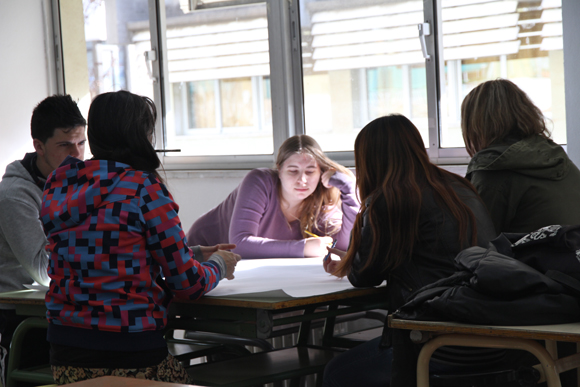
During the elaboration of the routes and later during the drifts, several lines of discussion and analysis arose, some of which would later be incorporated into the creation of the definitive maps on culture in the neighborhood. We will highlight here only three:
Firstly, the polarity between the perception of Bellvitge from outside the neighborhood and that of the people who live there reappeared: During the conversation, the idea emerged that there is a hegemonic view, from the center towards the periphery, that constructs a negative image of the neighborhood as a dirty, ugly place with a high level of crime. This image contrasts with the perception of its inhabitants, for whom Bellvitge is a working-class neighborhood with a long history of successful struggles for quality services and public spaces. The figure of the cani is key in the imaginary that is constructed from a normative perspective, largely assumed by the students themselves (even by those who live in the neighborhood). We ask ourselves, and share this doubt with them, whether the figure of the cani does not respond to some extent to the fears and interests of the dominant classes who portray young people from the subordinate classes as a dangerous, unproductive subject (the famous ni-nis) and uncivil, if not uncivilized, whose cultural practices (their clothing, the music they listen to, their way of speaking, etc.) are seen as vulgar, aberrant and degenerate.
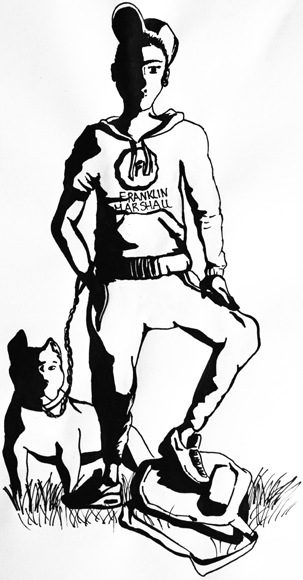
Secondly, we cannot ignore the fact that neither of the two groups pointed to the Bellvitge-el Gornal Cultural Center as a relevant space in our analysis of culture in the neighborhood. We could deduce from this fact that there is a great disconnection in the neighborhood between the cultural practices of young people and the institutional spaces destined for culture, as well as public spaces. On the routes, on the one hand, the
esplais
(leisure centers), the CIJB was initially linked to the parish of the neighborhood, and in the case of Bellvitge, to the religious school Joan XXIII. On the other hand, the
Pirulo
, a small kiosk located in one of the squares of the neighborhood, appeared recurrently as the most relevant public space, insofar as it is a place where young people meet and interact; however, the Pirulo appeared associated with a certain group of young people: the canis and the chonis, which is why many of the students did not even approach it.
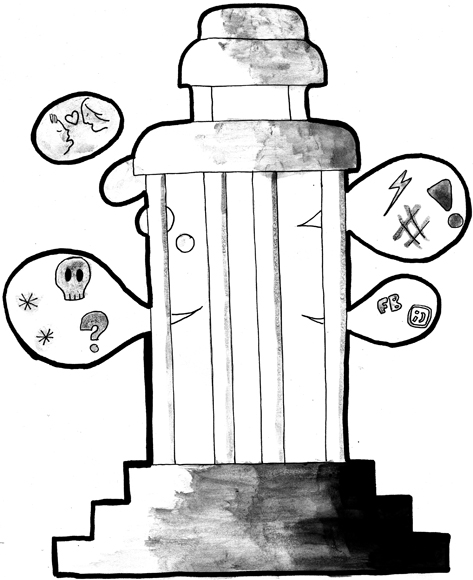
In relation to these spontaneous uses of public spaces, during the drift there was talk of a fact that seemed very relevant to the investigation and that was unknown to us until that moment: As we said, the Pirulo is a public space that the students associated with the canis, the fights, the hardcore techno and the reggaeton sounding on the speakers of the mobiles; almost by opposition, a group of students mentioned the Arc de Triomf of Barcelona as another public space in which a community of young people supposedly very different in their practices and cultural habits from the one that frequents the Pirulo of Bellvitge met. At Arc de Triomf, young people and adolescents linked, more or less closely, to the fandom meet, that is, geeks who share hobbies and minority cultural practices such as manga, fanzines, videoblogging, cosplay or steampunk, to mention just a few.
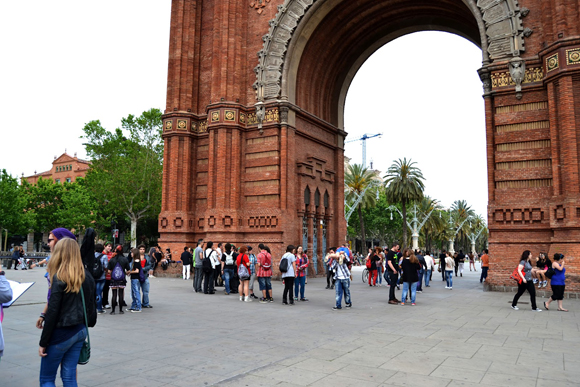
In this dichotomy between canis and geeks, young people settle identity, cultural, class, race and gender issues that would take us much more time to analyze than we can dedicate here but, summarizing a lot, we can observe the following: from a class perspective, the canis and the chonis are a totally homogeneous group composed of descendants of the first or second generation of the working-class immigrant population that arrived in Bellvitge in the 60s and 70s, from other regions of the Spanish state; the students also recognized the existence of what would be the “Latin canis“, that is, the gang members, however this group rarely shares spaces with the “native canis“, so to distinguish them, since they usually have a racist attitude of rejection of difference. In a more or less implicit way, this attitude is not infrequent -although it is not generalized either- among the working class in neighborhoods on the urban periphery such as Bellvitge, where migrants are blamed for a good part of phenomena such as unemployment, precariousness or crime. From a gender perspective, the relations between canis and chonis are completely heteronormative and patriarchal, and reproduce with slight variations in form the relations of subordination characteristic of previous generations between men and women. On the contrary, the “geek collective”, if we can speak of a collective, is much more heterogeneous from a class, cultural and racial perspective, and non-heteronormative identities and even
Finally, we were able to verify that there is a large generational gap in Bellvitge that translates into a struggle for the occupation of public space. This gap is also reflected in the entities that represent civil society and especially the
Associació de Veïns de Bellvitge
(Bellvitge Neighborhood Association), as attested by its own president during the interview that the students improvised when they met him casually on the street during the drift (as can be seen in the video that accompanies this entry between minutes 7:26 and 12:17).
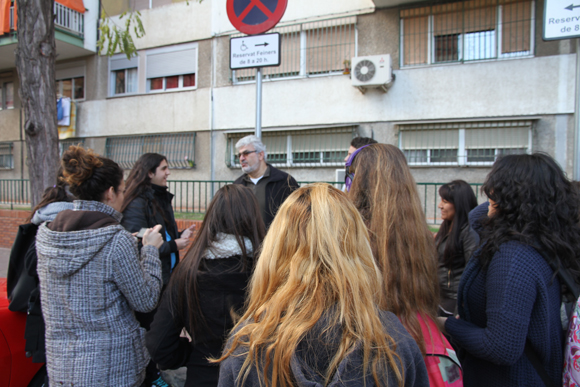
As is well known, the lack of generational change in neighborhood associations is not an exclusive fact of Bellvitge, but occurs in a large part of the neighborhoods of the municipalities of the Barcelona metropolitan area. Certainly, neighborhood associations played a fundamental role in the citizen struggles through which neighborhoods like Bellvitge managed to have basic equipment and services that they lacked at the time they were built. This fact has conferred on its historical members a privileged status -or rather has allowed them to attribute it to themselves- in the public sphere of the neighborhoods and in their representativeness. In Bellvitge this can be seen very clearly if we examine the composition and the capacity of influence of what is perhaps the most relevant cultural institution in the neighborhood (taking into account, if nothing else, the budgetary volume it manages): the Fiestas Commission, which is linked to the neighborhood association itself. It should be said that even today there is not only a generational gap: women are also largely excluded, a remnant that many neighborhood associations have dragged on from the years of their creation back in the 60s, a time when women were denied access to the public life of the neighborhoods.
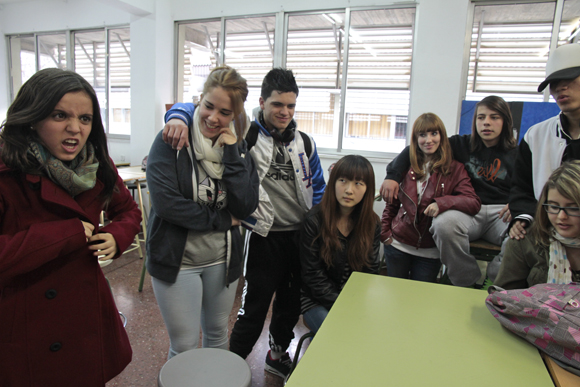
All these questions are more or less implicit in the observations, comments and cartographies of the students; part of our role in the work process consisted of making them explicit and submitting them to the consideration of the group for their analysis and subsequent representation on the map of the cultural practices of Bellvitge.
The video-summary of the route through Bellvitge was edited by Miguel Ángel Díaz, a student of the 1st year of Artistic Baccalaureate of the Institut Bellvitge.